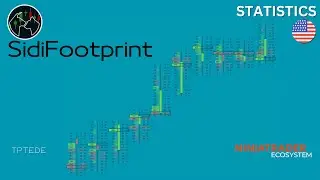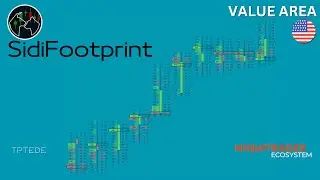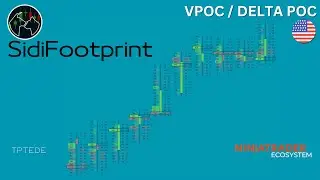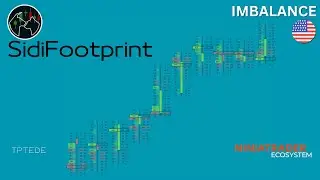Ninjatrader - Sidi Footprint - Imbalances
In this detailed tutorial, I explain the imbalance functions of the SidiFootprint Indicator:
⚖️ Imbalance Basics:
Definition of imbalances (buyer/seller excess)
Diagonal vs. horizontal reading
Configurable imbalance ratio (e.g., 300% or 400%)
🎨 Display Options:
Color distinction between buy and sell imbalances
Customizable text highlighting and opacity
Filtering by minimum volume and position (body/wick)
🔄 Advanced Functions:
Detection and display of unbroken imbalances
Settings for calculation and breaking of imbalance levels
Representation of stacked imbalances (multiple imbalances)
📊 Analysis Tools:
Intraday-only display
Advanced coloring based on imbalance strength
Options for extending the display
👉 Next Steps:
Explanation of the Volume Profile in the following video
Our support team is available for further questions.
#SidiFootprint #NinjaTrader #ImbalanceAnalysis #TradingTools #TwinPeaks #FootprintTrading
http://tpte.de/sidi-tools-licensing
---
Risk Disclaimer: The strategies presented in this video are for informational purposes only and do not constitute an offer, advertisement, or recommendation to buy or sell futures, currencies, or other securities or financial products. By using this information, you accept that the publisher assumes no liability, even though all information has been prepared with the utmost care and to the best of our knowledge and belief. No form of investment advice is provided through the information presented and made available here. Trading in financial products, specifically futures, currencies, stocks, and options, involves high risks, including the risk of total loss. Only trade if you understand and can bear the potential losses. If you use the methods presented here for your own trading, you bear sole and full responsibility. If you wish to receive investment advice or related services, please contact a state-licensed financial advisor. Profits and losses resulting from the videos always refer to past actions and therefore do not guarantee future profits. Financial markets are constantly evolving and changing, and trading decisions must be continuously adapted to these changes.































